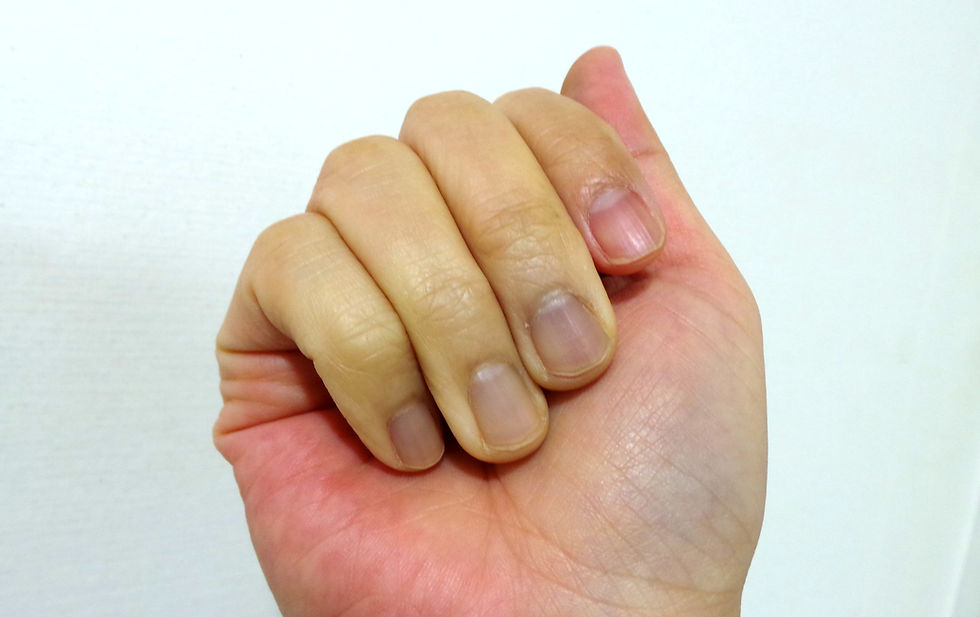Hand-Arm Vibration Syndrome - Analysing the Subsequent Effects From Exposure
- Thomas Wood

- Jun 23, 2020
- 4 min read
Updated: Feb 1, 2021

Operating equipment which emits vibration can lead to conditions relating to hand-arm vibration syndrome (HAVS). HAVS is a collective name for conditions which are caused by exposure to excessive vibration. Vibration is a physical agent which is generated by the movement or friction of two surfaces which emits energy. Exposure can cause debilitating conditions.
Sensorineural Hand-Arm Vibration Syndrome
There are neurological or sensorineural symptoms which become noticeable as a result of exposure. Identifying these symptoms may indicate that there is a problem with exposure to vibration in the workplace, which should be dealt with immediately to prevent occupational illness occurring as a result.
Transient paraesthesia, best described as an abnormal sensation of the skin such as tingling, pricking, chilling, burning or numbness, can be caused by excessive vibration and is often felt in the fingers of most users. This sensation usually fully reduces after a 20 minute rest period, according to Hunter' Diseases of Occupations.
Experiencing a tingling and numbing sensation in the fingertips, or across all of the fingers following exposure, is a sign of the physiological effects. Continued exposure may result in these effects lasting much longer than 20 minutes, instead, the exposed person may experience these sensations for hours.
A reduction in temperature appreciation and pain sensation can be experienced. However, in severe cases, a loss of manual dexterity can reduce the worker's ability to carry out intricate work, or even safely handle the tools.

Vascular Conditions
A common vascular condition associated with vibration exposure is Raynaud's Disease or Raynaud's Phenomenon. These common conditions are manifested by cold-induced sporadical attacks of digital arterial vasospasm of which causes whiteness of the affected parts of the hands and fingers.
In addition to Raynaud's Disease, there are other known conditions which are induced by exposure to excessive vibration. Examples are often related to collagen vascular disorders whereby your immune system causes inflammation in your collagen and localised joints. There are several collagen vascular diseases, including lupus, scleroderma, and rheumatoid arthritis.
Carpal Tunnel Syndrome
Carpal tunnel syndrome is a condition which derives from pressure on the median nerve at the wrist. People suffering from carpal tunnel syndrome may initially experience pain and paraesthesia in the hands, with numbness of the fingers. The condition can worsen at night.
Although the relationship between carpal tunnel syndrome and HAVS is unclear, it is suspected that the pathological effects of exposure to vibration result in swelling of the synovial linings, increasing pressure in the carpal tunnel.

Dupuytren's Disease
An increased prevalence of Dupuytren's Disease has been found in vibration exposed workers. The condition establishes itself with the development of thickening in the palmar fascia, the triangular structure in the palm of the hand. The development of nodules, bands and pits causes the affected fingers to pull towards the palm of the hand.
Weakness of Grip
Research suggests that hand-arm vibration can reduce grip. Multiple studies conducted with various working groups saw a significant percentage of subjects experience a loss of grip strength over a long period of time. Studies also suggested that intrinsic muscles and nerves were more at risk of becoming damaged leading to a reduction in intrinsic muscle power, predominantly in the hand rather than the arm. Chronic exposure to vibration has been seen to show a number of pathological changes to the nerve, along with intraneural fibrosis and myelin breakdown.
Bone and Joint Disorders
Bone cysts and osteoarthritis have been found to be prevalent in the wrists and elbows of exposed subjects. There is evidence of cysts developing in the carpal bones.

To Summarise
Conditions that are brought on by exposure to vibration, known as HAVS can have life-changing, rehabilitating effects on health and physiological capabilities of the hands and arms. Often repeat, chronic exposure can lead to a severe loss of functionality and irreversible damage to the vascular system and nervous system located in the hands and arms. As a result, exposed workers are at risk of experiencing life-changing work-related illness and as a result if workplaces fail to meet their moral and legal obligations.
That said, routine workplace exposure assessments should be undertaken to gather data of which can be used to calculate tool trigger times and required rest periods. With this, adequate usage of the tools can be managed to reduce daily exposures in line with the legal values. A professional occupational hygienist would be able to manage and implement a suitable and sufficient HAVS program to help any business remain compliant, reducing the risk of contracting the occupational conditions outlined in this article.
Organisations should consult with a qualified occupational health provider where they can seek and receive advice around appropriate health surveillance from a competent professional.

We hope this article goes some way to providing a brief overview of the health conditions often caused by exposure to vibration. If you wish to know more on this subject or need support with your assessments, health surveillance or the vibration management programs then please feel free to get in touch with us through social media or our website (www.workplacescientifics.com), by email at support@workplacescientifics.com or simply give us a call on 01709 931299.
Visit our Services Page Here:
#vibration #HAVS #Exposure #occupationalhygiene #safety #supporting #businesssupport #occupationalhealth #occupationalhealthandsafety #healthandsafety #healthandwellbeing #safetyfirst #safety





Comments